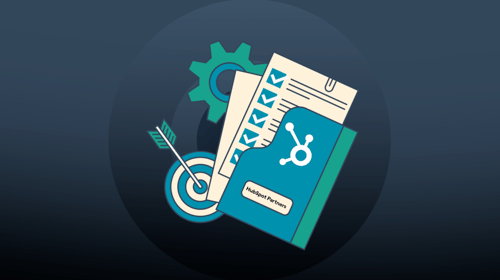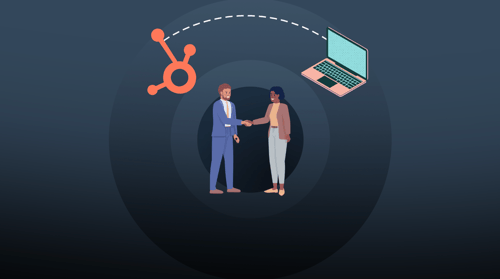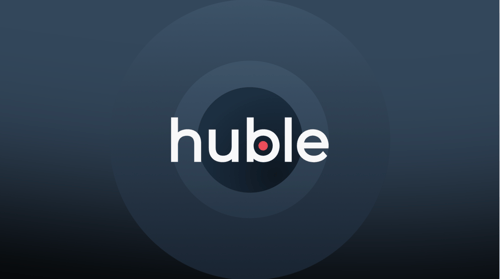In this blog, Matthew Creswick, Group Marketing Director at Huble Digital, evaluates the advantages and disadvantages of gating and 'un-gating' eBook content.
As Inbound Marketing enthusiasts, we’ve spent years building valuable, high-quality eBooks for ourselves and our clients, using them to educate website visitors and generate leads. These eBooks would be locked behind forms on landing pages, requiring the website visitor to share their details in exchange for access.
From a lead nurture perspective, the need and requirement for this kind of content isn’t going away, but is there still a need to gate it behind a form on a landing page?
Making the case for gating eBooks
A lot of time and effort goes into creating an eBook, this includes keyword research, topic brainstorming, drafting and finalising content, and design. You also need to build landing pages, thank you pages and follow-up emails before promoting the asset on specific channels.
Taking this into account, you can see why eBooks can be expensive to outsource and tricky to do in-house. You need a variety of skills: copywriting, website design, graphic design, marketing – and it’s this volume of expertise and experience that brings me to my first question:
Given the amount of effort you put in to creating an eBook, it’s only right that someone gives you their details to download it, right?
Sure, this way you can drive people to your eBooks through your website, social media channels, paid advertising and email marketing, and over time you’ll start generating leads.
If your eBook is on brand, on message and relevant to your target audience, you’ll generate lots of quality contacts from companies you would love to work with. However, if it hasn’t “hit the spot”, you may find some random, irrelevant contacts.
Things have changed
Go back 10 years and eBooks were a relatively new concept. Back then, they were really successful; website visitors would see unique content relevant to their interests, and be happy to fill in a form to obtain it.
But now, 10 years later, there are 10x the amount of eBooks available, and 10x the amount of choice. The internet, and your market specifically, are flooded with thought leadership eBooks and top tip guides and, while a lot of it is useful, most of it is freely available.
Think about a topic like ‘B2B content marketing’; 10 years ago there would only have been a handful of eBooks on the topic but now, after everyone talking about it non-stop, all of the information on it can be found without completing a single form.
Website visitors just don’t want to complete forms anymore (or are much less likely to). Sure, the addition of bots make it easier to convert website visitors as it doesn’t ‘feel’ like a conversion but, at the end of the day, people don’t want to give up their details in order to receive something they can get for free elsewhere.
Some are so against divulging their details that they use tools to get fake email addresses, allowing them to anonymously convert on a form and still receive the gift or offer at the end. To counteract this, some companies don’t link to the offer on the thank you page but instead email it to the website visitor’s email address.
But from the perspective of a qualified website visitor, how annoying is that?
So, it’s clear there are advantages and disadvantages to both gating and un-gating you’re your eBooks. Here’s what I think:
You should gate your next eBook when…
There’s nothing else like it in your market
Now, all of you will say your eBook is a cut above your competitors’, which is fine, but why is it? What sets your content apart from your competitors’?
In today’s age, you need to be creating impressive content and communicating its value so people download it.
For example, the best-performing content format right now are market research reports. Why? Well, it’s because they’re based on original research and provide accurate, representative analysis. These reports aren’t based on opinion but data gathered from interviewing and surveying people related to the industry.
When it’s an existing piece of content that’s already generating a lot of leads
If you already have eBooks on your site that have great conversion rates (anything over 25% is good, over 40% is great!) – let them do their job. You can work on making their landing pages better to get more traffic to them, but if they are working just fine, don’t try and fix them.
When what you’re offering if really valuable and informative
Similar to my first point, only gate your eBooks if your content offer is informative and valuable. If you think it’s something that someone can find elsewhere without filling in a form, think about giving it away for free.
You shouldn’t gate your eBooks when…
You’re struggling for organic traffic
Google doesn’t read PDFs, so your eBook’s landing page is unlikely to rank highly (though it can).
This means that, no matter how amazing your eBook, often it won’t be found via organic search – especially if you have no organic traffic to begin with.
Thousands of searchers type questions into Google, that your eBook might answer, but because Google doesn’t know, it’ll end up showing other content instead.
You’re struggling for leads
If you aren’t generating leads, you need website traffic.
Remember, no one will find your eBook unless they find your website.
Think about building your eBook out as a website page instead. Educate website visitors and build trust with your readers by giving your insights away for free. Then, later down the line, create another piece of insightful, original content and gate it.
You can convert a percentage of 1,000 website visits, but you can’t convert a percentage of 0 visits.
So how can you have a mix of both?
I firmly believe there is a mix of both ungated and gated content that is the perfect mix for Inbound Marketing success. You just need a good B2B content marketing strategy to support it.
More often than that, you're looking at increase traffic and leads. The starting point of which is driving traffic to your website. On that basis I would take as much long form, awesome content that you have and build it as blogs and web pages across your website to ensure Google can see it, and people will find you via organic search.
In addition, you should work hard on conversion points across your website to ensure there are lots of possibilities to generate leads.
For example:
Top of the funnel - use the content you've used to build a pillar page and reformat into a PDF. There's always people who want to download content to read later and offline.
Middle of the funnel - can you build a tool, provide a document or template for example in order to convert contacts on your site? You can also use chatbots and live chat to entice people to get in touch when it suits them.
Bottom of the funnel - do you have bottom of the funnel options via live chat, contact us forms, booking consultation and meetings with your sales team?
Overall, I would recommend to stop hiding all of your fantastic content from Google, and therefore from your potential website visitors. Focus on generating traffic that way, and then work out how you improve the conversion of those website visitors.










-3.png?width=500&height=320&name=Matt%20-%20imagery%20bank%20(8)-3.png)

